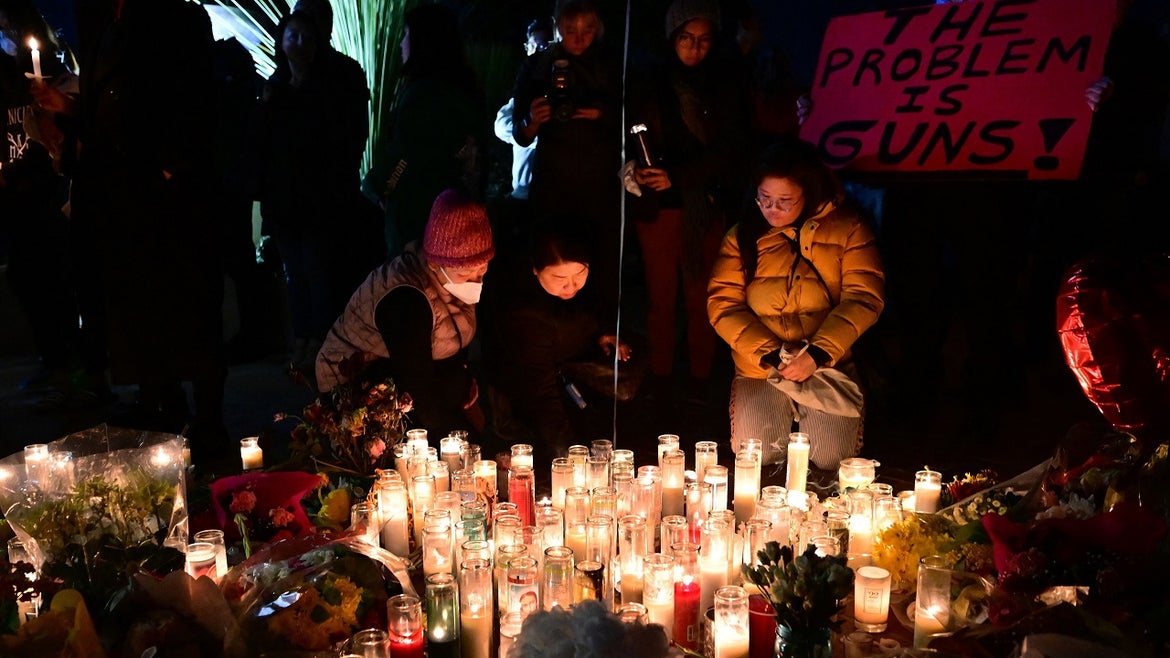The U.S. Secret Service has analyzed more than 100 mass casualty attacks. Here's what you need to know about its findings.
As the nation reels from yet another series of mass shootings, this time in California, the U.S. Secret Service has released a report that analyzed key precursors to more than 100 violent attacks in America.
The agency reviewed 173 incidents that caused the deaths or injuries of at least three people in public places such as schools, places of worship, and businesses.
In a 72-page report, the Secret Service detailed common denominators in the behaviors of those who carried out the rampages between 2016 and 2020.
Beginning this weekend, 11 people were killed when a gunman opened fire in a ballroom during Lunar New Year celebrations in Los Angeles County's Monterey Park. Less than two days later, seven people were shot to death at two mushroom farms in Northern California's Half Moon Bay.
Here are the report's key findings, which researchers hope will help identify would-be assassins and encourage people to report troubling behavior.
"There is no community that is immune from this," said Dr. Nina Alathari, chief of the U.S. Secret Service National Threat Assessment Center. "But we do see commonalities that will help us with prevention."
"Goodbye." More than 25% of attackers made final communications
From publishing online manifestos to making cryptic farewells, 28% of assailants issued some kind of goodbye that announced their plans. Some wrote suicide notes, others called friends and family to say they would never see them again.
"Final acts, some of which were part of planning, included attackers terminating a lease, giving away personal possessions, no longer buying food for a pet, verifying or changing life insurance, and securing finances for family members," the report said.
Others made troubling, hate-filled statements.
As an example, the shooter in the Pulse nightclub attack in 2016, which killed 49 people and injured 53, "had exhibited behaviors indicative of several belief systems, including anti-Semitism, jihadism, and misogynistic or anti-female views," the report said.
Most attackers experienced serious setbacks before their rampages
Some 93% of assailants had gone through severe personal problems including divorce, illness, being disciplined at work and being expelled from school.
Researchers also found that 39% had experienced housing issues within 20 years of their attacks. Of that number, 17% were homeless at the time of their attacks. Three of those assailants targeted other homeless people, the report said.
About 30% of attackers had a history of drug abuse and alcoholism that led to "negative consequences because of their substance use, including criminal charges, professional or academic failures, court-ordered programs, and evictions," according to the report.
Mental health issues often plagued assailants before or during their attacks
Nearly 60% had symptoms of depression, psychosis and had experienced suicidal thoughts, researchers found.
"The symptoms described in this section constitute potential contributing factors and should not be viewed as causal explanations for why the attacks occurred," the report said, noting the vast majority of people with mental health problems do not commit crimes or acts of violence.
Some 30% had received some kind of treatment, but it "varied widely and was often not sustained," according to the report.
Many attackers were motivated by perceived wrongs and grievances
Those grievances were most often linked to stress over health and financial issues and feelings associated with bullying and victimization. About 10% were connected to their workplace.
Researchers surmised "grievances have remained the most common component to the motives of mass attackers from 2016 to 2020." Nearly all, or 96%, of the attackers were men.
Most of the attackers used guns
In 73% of mass casualty incidents, the attacker used one or more guns.
"In terms of fatalities when you compare weapon types, over 80% of the incidents using firearms were fatal. For other weapons, just under half fatalities," Alathari said.
In 19 of those shootings, the firearm was acquired within one month of the attack. In the case of three, it was acquired on the same day as the attack. Most were purchased legally.
The report also noted that nearly 50% of attackers exhibited some type of strange behavior that attracted the attention of family, friends and co-workers.
"We want to make sure communities have this information that the Secret Service is putting out," Alathari said. "We have the science. We have the guidance. We want people to use it so that we can try to prevent future, horrific acts of violence."
Related Stories






